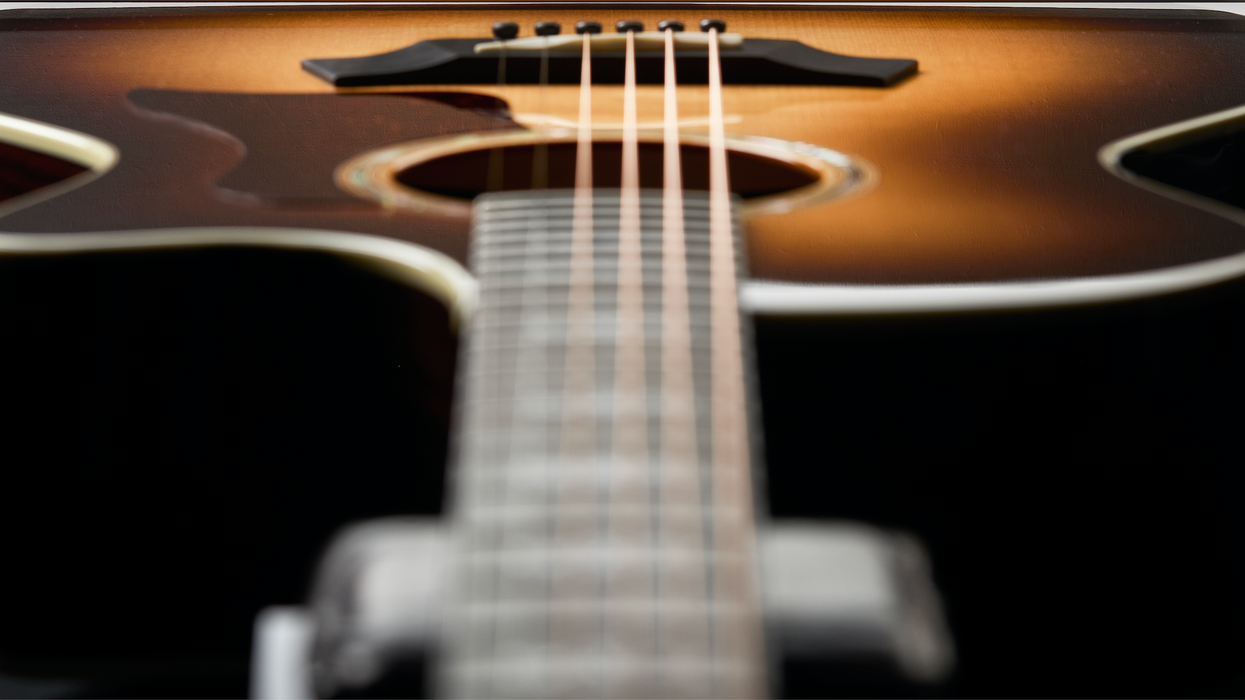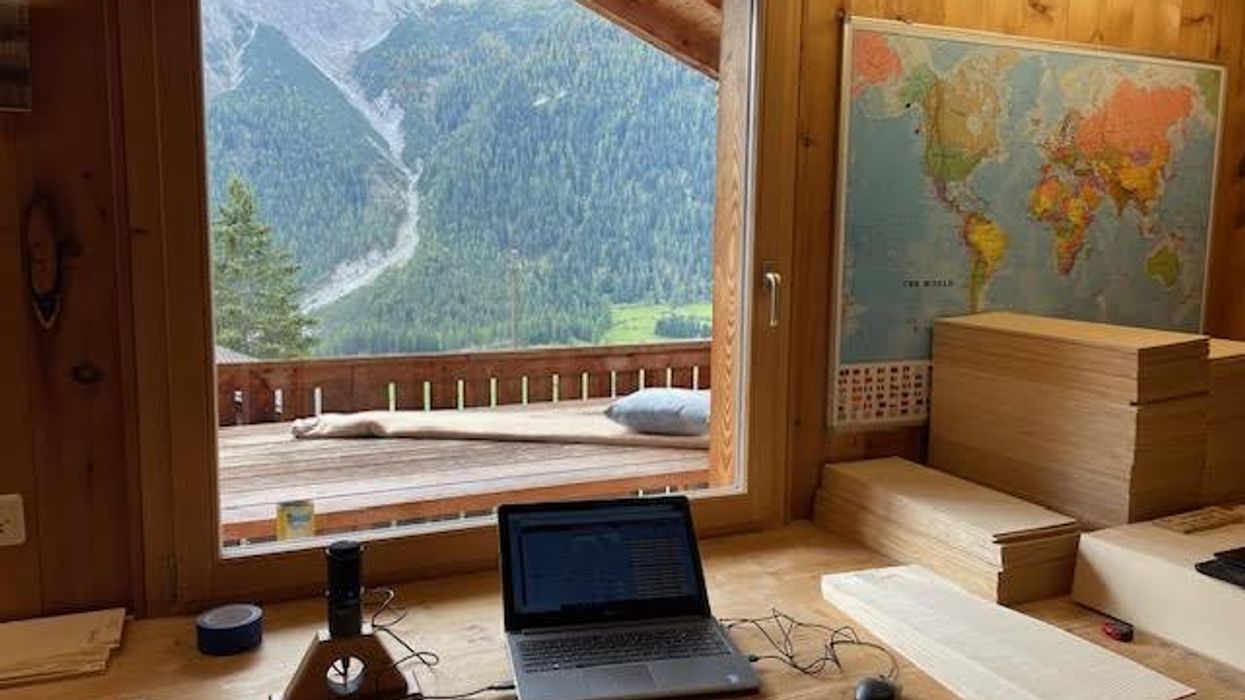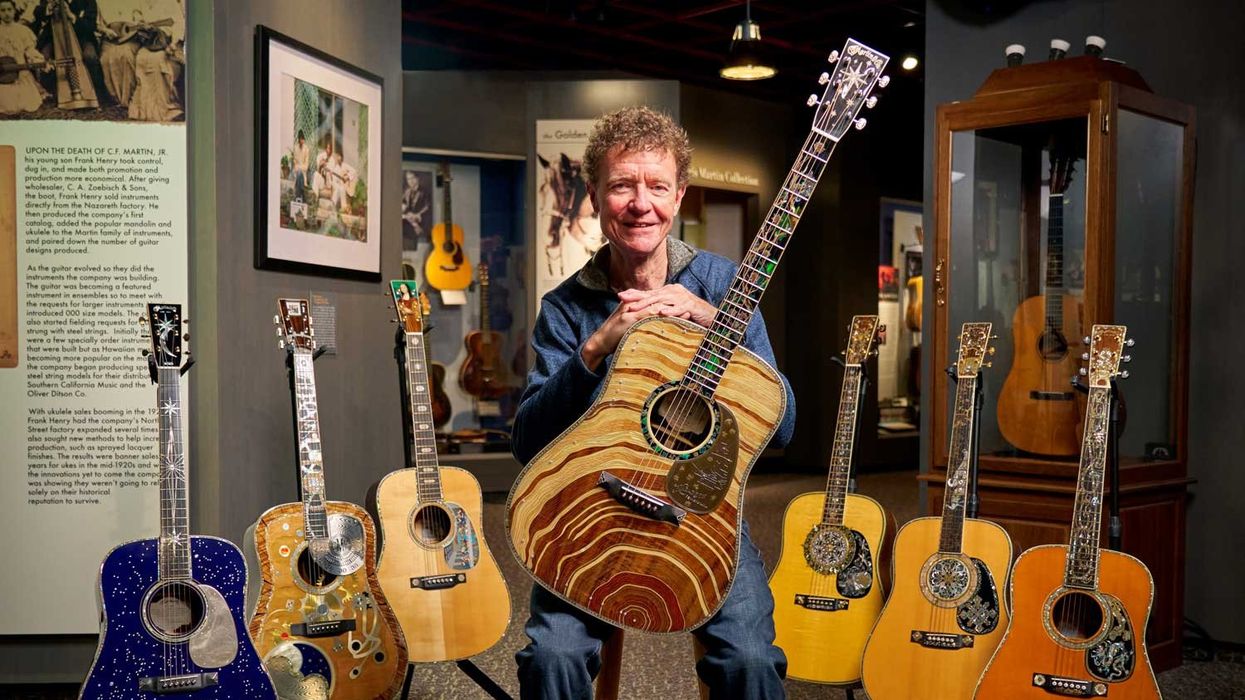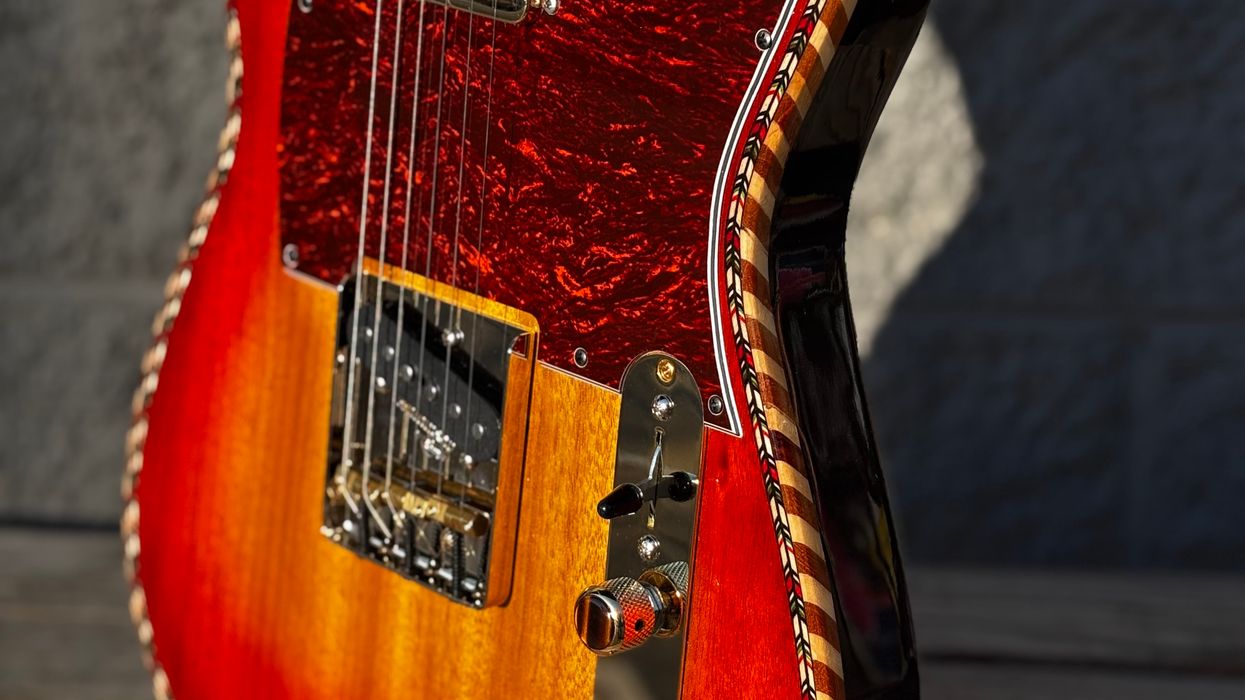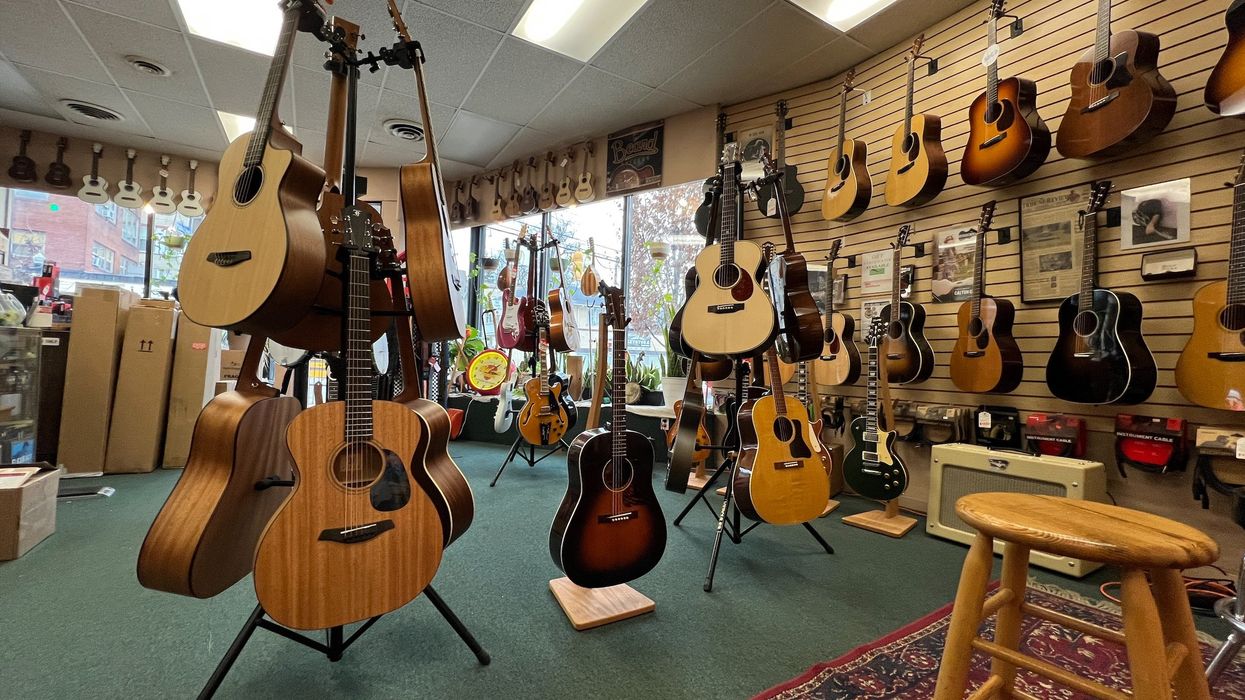As acoustic guitar players and makers, we use the term "flattop guitar" so often it may come as a surprise when careful investigation reveals the top and back of a guitar to be anything but flat. While an archtop guitar's dramatically sculpted top and back contours are obvious at first glance, signaling cello-like inspiration and construction, the subtle contours of our favorite flattops are equally critical for the structure and sound we love.
To better understand how this gracefully curved structure works, consider the practicalities of how a guitar top is constructed. From a board, a very thin sheet of wood is cut. Typically, two or more pieces are joined together edge-to-edge in order to provide the most predictably uniform wood grains across the width of the guitar. This top usually has what's known as quartersawn grain orientation for maximum strength and consistency, with the growth rings of the wood perpendicular to the guitar's face, as if the hard grain lines were miniature structural beams.
Braces are glued to the underside of the top in any number of different arrangements. The purpose of these braces is to guide the vibration of the top in a way that makes a pleasing musical sound, while imparting enough strength to the top to avoid physical distortion or outright fracturing when supporting the tension of the strings.
One challenge a guitar maker faces is to build the top with very light weight, so it can respond easily to string vibration, yet enough strength and stability to withstand the immense tension. When a flat sheet of material is bent into a curve, even a subtle curve, its strength is increased significantly. Imagine a sheet of paper. It's very thin and incredibly flexible. When held in a curved shape, it becomes far stronger perpendicular to the axis of the bend.
When a flat sheet of material is bent into a curve, even a subtle curve, its strength is increased significantly.
In a more extreme example, if the paper is rolled into a tube, it becomes exponentially stronger, all without adding any additional mass. This same principle is applied to a guitar top. Most commonly, instead of a mere cylinder shape, where the top is arched in a single direction, the top is gently coaxed into a spherical shape, increasing its strength in every direction. This spherical shape is formed and held in place by cutting a corresponding curve into the braces and sides of the guitar—which are far less flexible than the thin wood of the top itself—and gluing the entire structure together to anchor this shape in place.
Unlike the top, the grain orientation of the braces glued to the top prevents them from following the shrinking or swelling in dry or humid conditions. As a result, the top or back will slowly sink, eventually becoming flat, or even slightly concave, in dry weather. The subtle built-in arch of a top or back allows the wood to have room to shrink before it cracks. We could think of this as building in some slack to prevent damage. In humid conditions, the top and back will swell, rising up into a higher arch as the wood grows in size. While this will temporarily raise the strings higher from the fretboard and make the guitar harder to play, no further damage is imminent.
The practices of arching a top and back are practical habits of instrument makers that stretch back hundreds of years. Each maker has its own approach to this subtle art and uses this as an ingredient in voicing the sound of instruments. Regardless of the exact amount and relationship of the arches, which vary by the maker's design and are further influenced by the weather and conditions of the day, it seems our guitars remain a curiously beautiful balance of carefully thought-out physics and artful practicalities.


